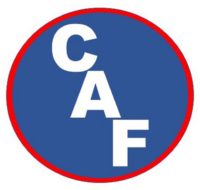Figuring the exact dollar saving for purchasing a CAF System is not an exact science, but here is how it works:
Look back on the fires experienced in your department. Of the estimated dollar losses, estimate the loss attributed to water damage. A lot of fire departments estimate that water damage may be as high as 50%. Divide the total dollar losses by the estimated % water damage and figure the water damage cost per fire.
The cost to adding Compressed Air Foam ranges from $30-60k depending on the model and manufacturer.
Compressed air foam, for all practical purposes, eliminates water damage. Based on the reduced water damage, A CAF unit will on average pay for itself in how many fires?
Now, let’s look at it from a fire loss standpoint. Figure out your department’s average time to knock down a fire once you are on the scene. Be realistic here and consider the time it takes to really cool down the
internal atmosphere. Calculate in your current estimate of the dollar loss/minute done by the fire (entire burn time). CAF can extinguish a fire in less than 1 minute. This reduces your average extinguishment time by how many minutes? Multiply this number by the dollar loss/minute and identify this loss savings. Now, based on reduced fire loss dollars, a CAF unit will pay for itself in how many fires?
Another calculation could also be done on reduced smoke damage, however for this it is difficult to produce numbers. Research into smoke damage figures is ongoing and no current figures have been found.
However, any reduced smoke damage, combined with the reduced fire damage and virtual elimination of water damage, coupled with increased customer satisfaction gives a good indication as to the cost offset
for buying CAFs into the fire arsenal.
By the way……from your calculations, how many house fires do you figure it will take to pay for a $60k machine?
Customer Service -$$$
Our customer (the tax payer) does not like fire. They want it out of their house as quickly as possible. Lets look at 2 houses, same size and side-by-side. Both houses are on fire, heavily involved, and both tax-paying
homeowners are there, watching. Engine A attacks House A using water only. Engine B attacks House B using CAF. House B is extinguished in less than 1 minute using approximately 40 gallons of water. House A takes several minutes and requires more water than the engine has available. For the taxpayer, minutes seem like eternities when fire is inside their comfort domain. How will taxpaying customer A feel about Engine A’s customer service during this extended burn time? This reaction will again occur when Homeowner A sees the additional damage cost compared to that of Homeowner B. We cannot place a
$Dollar figure on customer service.
Foam Concentrate – $$$
Class A Foam Concentrate runs on average $26.00/gal. A 5-gallon bucket costs approximately $130.00 and a 55-gallon drum around $1400.00. A well-involved house can be extinguished with as little as 40-gallons
of water. Using a .3% solution for CAF, a total of .12-gallons of concentrate is used. Therefore it costs as little as $3.12 in concentrate to extinguish 1 house fire. Pretty cheap.
The question now becomes, Can a department afford not to use compressed air foam?
Where does the cost saving (or tax $ profit) go?
Spending $60k in tax dollars to purchase a CAF system does not return directly to the department budget line. Instead, it is returned to the tax paying homeowner in terms of reduced insurance premium payments. If the fire loss is decreased, the insurance company damage payouts decrease, thus resulting in a need for lower premiums. The tax used to purchase the CAF will eventually be offset by lower premiums.
COMPRESSED AIR FOAM CAN MAKE A $$$DIFFERENCE$$$
compressedairfoam.com – a Division of LongBear,
LLC (www.LongBear.com)





































